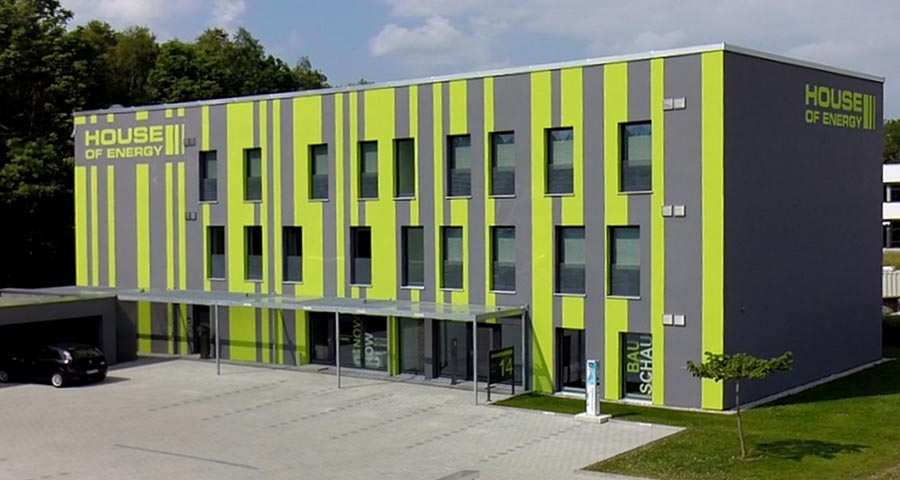
- Projects
- Posted
Bavarian building first in world to earn passive house premium cert
One of the world’s most sustainable buildings stands in Bavaria: as the first of its kind, a mixed residential and commercial project in the town of Kaufbeuren has met the criteria for passive house premium certification. With a heating demand of only 8 kWh/m²yr, it is uniquely energy efficient. At the same time, a 250 sqm photovoltaic system on the roof produces renewable energy.
On 14-15 November, everyone has the chance to experience the structural quality and excellent indoor air quality of this building – the doors will be opened to the public within the framework of the international Passive House Days 2015. The certificate will also be officially presented to the building owners at this event.
The project was developed by the building services company Airoptima, which now has its headquarters in the world's first passive house premium. With a total area of about 900 square metres, the building, officially known as the "House of Energy", also has space for the operations manager's flat, a training centre, and a permanent exhibition on the topic of "Construction and Refurbishment". The three-storey solid construction was certified by the company Herz & Lang.
As in every passive house building in central Europe, maximum energy efficiency is ensured through triple-glazed windows, an excellent level of thermal protection, an airtight building envelope, largely thermal bridge-free construction and a ventilation system with heat recovery. As for the ventilation, devices from different manufacturers were installed for comparative measurements. A ground-source heat pump is used for the remaining small heating demand and hot water provision. The necessary auxiliary energy and domestic electricity are provided by the photovoltaic system. Any surplus energy that is generated is fed into the grid.
The building class passive house premium was launched together with the passive house plus in April with a new version of the design tool PHPP. In both cases the building owner is offered reliable guidance when combining efficiency with renewable energy. However, energy generation and demand are calculated separately – in many climate zones, renewable energy is mostly generated in summer, but the greatest demand usually exists in winter, and seasonal storage would be associated with losses. For the individual energy applications, PER (Primary Energy Renewable) factors are specified which state how many kilowatt hours of renewable primary energy have to be generated for one kilowatt hour of energy required at the building.
In the case of a passive house plus, the upper limit for the overall demand for renewable primary energy is 45 kWh/m²(total floor area or TFA)yr. In addition, at least a projected 60 kWh/m² yr of renewable energy, based on the building footprint, must be generated. For a passive house premium building, the energy demand is limited to 30 kWh/m²TFA yr. The project in Kaufbeuren with 21 kWh/m²yr) clearly achieves this value – and thus compensates for its slightly lower energy generation which is specified as 120 kWh/m²yr for this class. The maximum heating demand applicable for all passive house classes is 15 kWh/m²TFA yr.
During the Passive House Days 2015, the passive house premium building in Kaufbeuren can be visited on 14-15 November between 10am and 5pm. Several hundred passive house buildings will be open to the public in many countries on this weekend. The initiative by the International Passive House Association (iPHA) offers prospective building owners and other interested persons the opportunity to obtain information relating to the special features of this energy efficient building standard directly from residents of Passive House buildings and architects, and to experience for themselves its advantages – such as the indoor air quality. An overview of the buildings which can be visited during the Passive House Days can be found on the website www.passivehouse-database.org.

